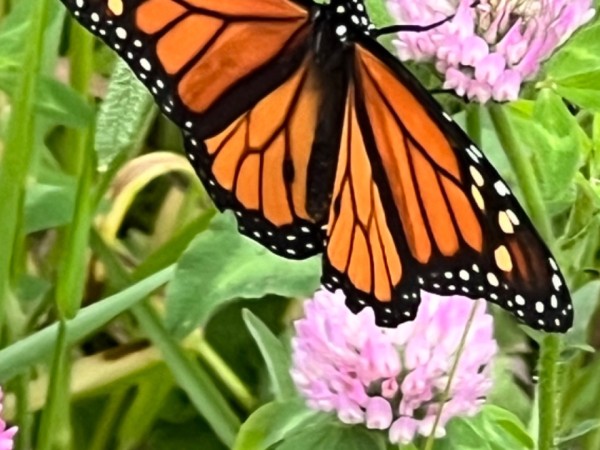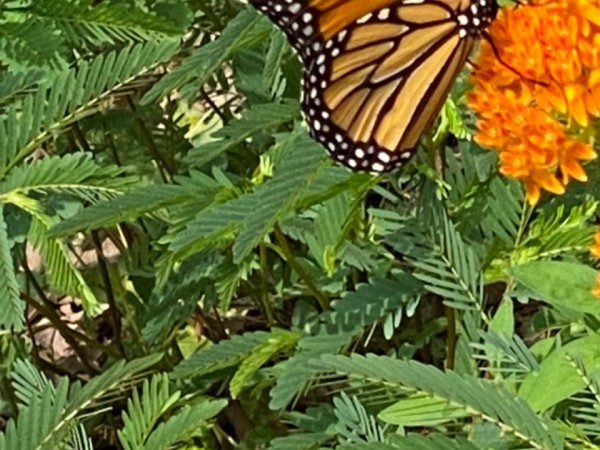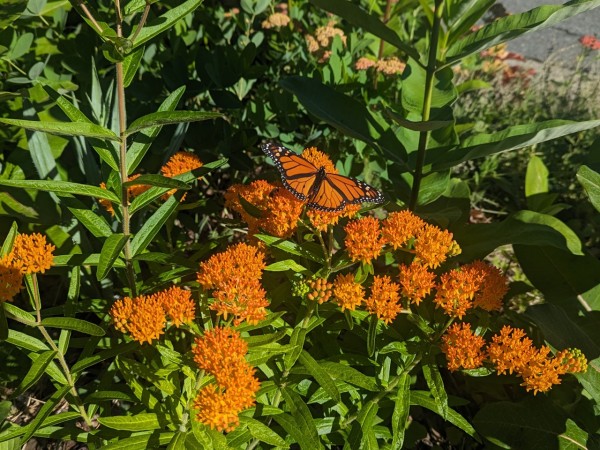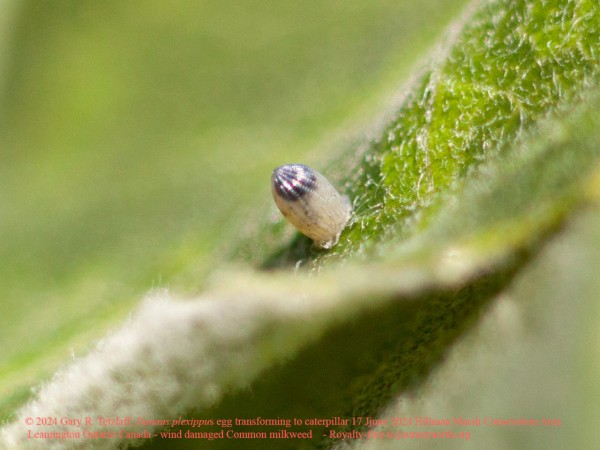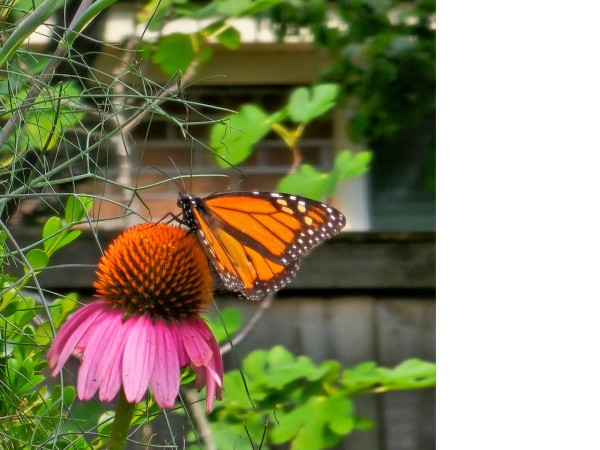Spring migration update #6: eastern migration news
Some people are seeing the butterflies transition through their annual cycles already. In some cases, it’s more evident to see which butterflies are where on their short journey through life at their breeding grounds.
Eastern monarchs typically go through four or five generations in a single year. The monarchs from Mexico migrate into the South, laying eggs beginning in mid-March. The offspring of the first generation from Mexico then migrates north to lay eggs.
Two more generations will lay eggs in the North, with the great-great grandchildren (fourth generation) migrating to Mexico in the late summer. They will be the ones to move north the following year to start the process over again. Some monarchs will breed in the South one more time beginning in August, making a fifth generation that will then migrate to Mexico.
“Was out following a very tattered female that is so washed out. She almost looks gray. You can tell she is near the end of her life because she’s just in egg laying mode dropping eggs on milkweed 2, 3 and even four on a single plant,” wrote Chris in Zimmerman, Minnesota on June 18. “As I was watching her I noticed a bright beautiful male that appears to have just enclosed as he was bright and not the best flyer, really enjoying the purple clover. Building up that strength as he is the start of the 2nd generation. Coincidentally my first captive raised monarch enclosed today. A male that I found as an egg on May 23rd marking just 26 days from egg collection to enclosing.”
In Lawrenceville, Georgia, Meg wrote on June 18, “One fresh looking male monarch on milkweed. Could be the same one as yesterday. Could be offspring from 5/16 siting. It’s unusual to see a monarch this late in the season.”
On June 7, Angela in Hamilton, Ohio, reported, “Fresh looking adults feeding on butterfly milkweed & common milkweed, plus 2 others flying thru backyard.”
Participants throughout the monarch’s range are reporting seeing monarchs as the season progresses, visiting flowers and visiting milkweed to deposit eggs, which then become caterpillars and start the process over again.
“One bent-over Common Milkweed inspected and found to contain the egg in the photo,” said Gary in Wheatley, Ontario on June 17. “Could be a caterpillar by sunset today!”
“A female showed up around 1:53 PM. She nectared a bit on my common milkweed then began to visit several plants leaving eggs on the tops and underside of leaves. It was sunny windy with highs around 80F,” wrote Mona in Herndon, Virginia on June 10.
“This lone monarch has been flying around our yard for days, as if awaiting a mate. It rarely stops to nectar and always on the coneflowers, although there are many, many blooming milkweed plants, zinnia, petunias, coreopsis and passion flowers on the property,” wrote Ellen in Charleston, South Carolina on June 10.

